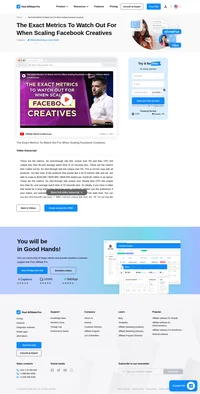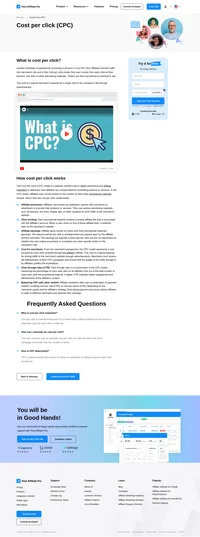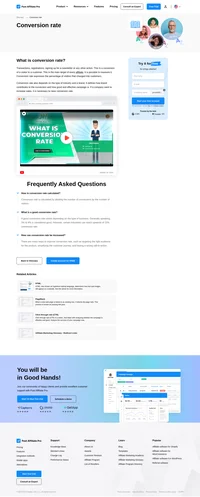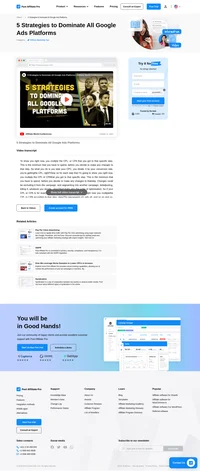What is click through rate?
Click-Through Rate (CTR) is a fundamental metric in digital marketing and affiliate marketing, representing the effectiveness of an online ad, email, or hyperlink in capturing the interest of users. It is defined as the ratio of users who click on a specific link to the number of total users who view a page, email, or advertisement. In the context of affiliate marketing, CTR is crucial as it helps affiliates measure how well their content, such as banners or links, engages potential customers and drives traffic to merchant sites.
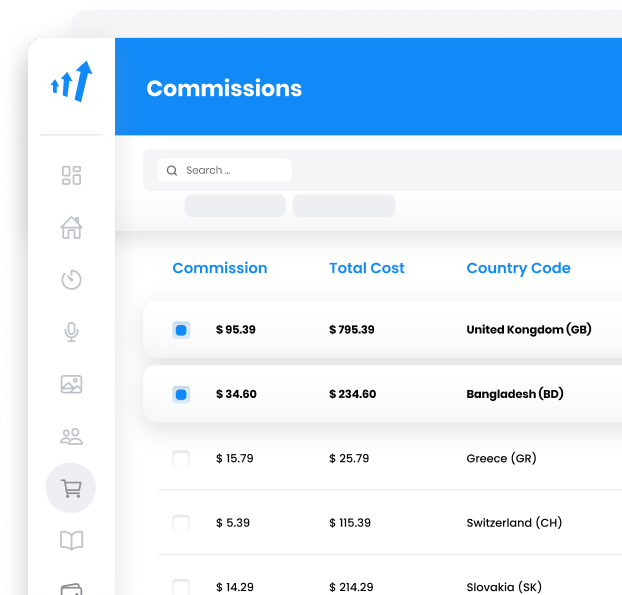
Definition and Calculation of CTR
What is CTR?
CTR is expressed as a percentage and is calculated using the following formula:
CTR = Number of Clicks/Number of Impressions * 100
Where:
- Number of Clicks: The number of times users clicked on a link or ad.
- Number of Impressions: The number of times the link or ad was shown to users.
For example, if an affiliate link on a website receives 50 clicks out of 5,000 impressions, the CTR would be:
CTR = 50/5000 * 100 = 1%
Importance of CTR in Affiliate Marketing
In affiliate marketing, CTR is a critical measure of performance. A higher CTR indicates successful engagement, suggesting that the content is relevant and compelling to the audience. This can lead to increased conversion rates, where users not only click but also complete desired actions such as making a purchase or signing up for a newsletter.
CTR in Affiliate Marketing
Affiliate marketing relies heavily on effective CTR optimization to maximize earnings. Affiliates earn commissions based on the actions users take after clicking their links, so maintaining a high CTR can significantly impact profitability. Here are some key aspects of CTR in affiliate marketing:
CTR and Affiliate Links
- Affiliate Links: These are unique URLs provided to affiliates to track the traffic and sales generated from their promotional efforts. The CTR of these links is a direct indicator of how well the affiliate content resonates with the audience.
- Good CTR: A good CTR for affiliate links can vary by industry, but generally, a CTR between 1% to 3% is considered healthy. Higher CTRs suggest that the affiliate is effectively targeting the right audience and using engaging content.
Tools and Techniques for Improving CTR
- A/B Testing: This involves experimenting with different versions of content to see which performs better. Affiliates can test various headlines, images, and call-to-action (CTA) buttons to optimize CTR.
- Audience Targeting: Understanding the demographics and preferences of the target audience can help in crafting content that resonates more with them, thereby improving CTR.
- Content Optimization: This includes improving ad copy, using compelling visuals, and ensuring that the affiliate content is relevant to the targeted keywords.
CTR in Different Digital Marketing Channels
CTR is not limited to affiliate marketing; it is a vital metric across various digital marketing platforms, including:
Google Ads
In Google Ads, CTR is a primary indicator of an ad’s performance. Higher CTRs can lead to better Quality Scores, which can reduce costs per click (CPC) and improve ad placements. A good CTR in Google Ads varies by industry but generally ranges from 2% to 5%.
Email Marketing
In email marketing, CTR measures the effectiveness of an email campaign in encouraging recipients to click on included links. Factors like subject line relevance, email design, and personalization play significant roles in influencing email CTR.
Social Media and Display Ads
Social media platforms and display networks use CTR to gauge the engagement level of ads. High CTRs suggest that the ad content is well-targeted and engaging, while low CTRs might indicate a need for better targeting or creative adjustments.
Factors Influencing CTR
Several factors can impact the click-through rate of online content:
Content Quality
High-quality, relevant, and engaging content is more likely to capture the attention of users, leading to higher CTRs. Affiliates should ensure that their content aligns with the interests and needs of their audience.
Ad Position
The placement of an ad on a webpage or within an email can significantly affect its CTR. Ads placed in prominent positions are more likely to be seen and clicked.
Call-to-Action (CTA)
A strong and clear CTA can encourage users to take the desired action. Affiliates should use persuasive language and design to guide users toward clicking their links.
Target Audience
Understanding the behavior and preferences of the target audience can help in crafting content that resonates more, thereby improving CTR.
CTR Optimization Strategies
To optimize CTR, affiliates and marketers can employ various strategies:
Systematic Testing
Conducting A/B tests to compare different versions of ads or content can help identify what works best in capturing user interest.
Enhancing Visual Elements
Using eye-catching images and videos can increase the likelihood of users engaging with the content.
Improving Copy and Messaging
Crafting compelling ad copy that addresses the audience’s pain points and offers solutions can boost CTR.
Audience Segmentation
Segmenting the audience based on demographics, behavior, or interests allows for more targeted and relevant content delivery.
Continuous Monitoring and Analysis
Regularly tracking CTR metrics and analyzing performance data helps in making informed decisions and adjusting strategies as needed.

Frequently Asked Questions
How is click-through rate calculated?
Click-through rate is calculated by dividing the number of clicks by the number of times the link was viewed.
What is a good click through rate?
The answer to this question varies depending on the type of campaign and industry. For social media campaigns, the average CTR can range between 0.7% to 2% depending on the platform. On the other hand, banner ad campaigns have an average CTR of 0.46%, while pay-per click campaigns have around 2% CTR.
How can click-through rate be improved?
Click-through rate can be improved in a number of ways, such as targeting the relevant audience, using eye-catching visuals, and placing ads in high traffic sites.
How to make money with affiliate marketing
Discover the secrets to earning money with affiliate marketing in this comprehensive guide by Post Affiliate Pro. Learn how to start, optimize your strategy, and choose profitable niches, even if you're a beginner. Unlock the potential of affiliate marketing to turn your passion into a lucrative career. Start now and transform your side gig into a full-time income stream!
Discover the power of CPC (Cost Per Click) with Post Affiliate Pro! Track clicks, set commissions, and maximize your marketing budget with cost-effective, targeted advertising. Perfect for businesses of any size, our user-friendly platform offers customizable options and fraud protection. Try it free today and transform your affiliate marketing strategy!
The Exact Metrics To Watch Out For When Scaling Facebook Creatives
Discover key metrics for scaling Facebook creatives with Post Affiliate Pro! Learn about optimizing click-through rates, reducing CPC, and enhancing watch time to boost your campaigns. Unlock the secrets to successful affiliate marketing and maximize your reach today.
Discover the essentials of Cost Per Click (CPC) advertising on Post Affiliate Pro's webpage. Learn how affiliates earn money per click on promotional materials and how merchants manage CPC expenses to drive traffic effectively. Explore strategies to optimize click-through rates and balance CPC with other payment models. Visit now for insights into maximizing your digital advertising efforts!
5 Strategies to Dominate All Google Ads Platforms
Discover 5 powerful strategies to optimize your Google Ads campaigns and boost your affiliate marketing success! Learn about campaign optimization, leveraging Google's AI, using CPA, native search remarketing, and tips to enhance YouTube click-through rates. Unleash the potential to outperform competitors and maximize revenue with these expert insights.



